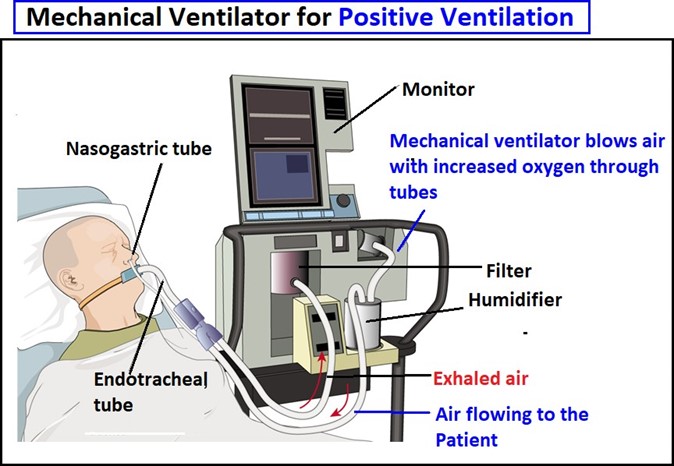A nurse is caring for a client who had an evacuation of a subdural hematoma. Which of the following actions should the nurse take first?
Observe for cerebrospinal fluid (CSF) leaks from the evacuation site.
Check the oximeter.
Assess for an increase in temperature.
Monitor for manifestations of increased intracranial pressure.
The Correct Answer is B
Choice A Reason: Observing for cerebrospinal fluid (CSF) leaks from the evacuation site is important, but not the first action that the nurse should take. CSF leaks can indicate a breach in the dura mater, which can increase the risk of infection and meningitis. The nurse should inspect the dressing and the nose and ears for any clear or bloody drainage, and report any findings to the provider. However, these measures are secondary to ensuring adequate oxygenation and perfusion.
Choice B Reason: The first action the nurse should take when caring for a client post-evacuation of a subdural hematoma is to check the oximeter to ensure adequate oxygenation. Maintaining proper oxygenation is a priority because hypoxia and hypercapnia can lead to cerebral vasodilation, increasing intracranial pressure (ICP) and worsening neurological outcomes. Key Concept: Always prioritize Airway, Breathing, and Circulation (ABCs) when determining the most immediate nursing intervention.
Choice C Reason: Assessing for an increase in temperature is another important action, but not the first one that the nurse should take. An increase in temperature can indicate an infection, inflammation, or damage to the hypothalamus, which can affect the thermoregulation of the body. The nurse should monitor the temperature and administer antipyretics as prescribed. However, these measures are secondary to ensuring adequate oxygenation and perfusion.
Choice D Reason:This is crucial, but oxygenation status should be checked first since low oxygen levels can worsen ICP.
Nursing Test Bank
Naxlex Comprehensive Predictor Exams
Related Questions
Correct Answer is B
Explanation
Choice A Reason: This is incorrect because preparing for mechanical ventilation is not the priority nursing intervention, as it is an invasive and potentially harmful procedure that should be reserved for clients who have severe respiratory failure and cannot maintain adequate oxygenation with noninvasive methods.
Choice B Reason: This is correct because administering oxygen via face mask is the priority nursing intervention, as it is a noninvasive and effective way to improve oxygenation and reduce hypoxemia in a client who has low PaO2 and SaO2. Oxygen therapy can also decrease the workload of the heart and lungs and prevent further complications.
Choice C Reason: This is incorrect because preparing to administer a sedative is not the priority nursing intervention, as it may worsen the client's respiratory status and mask the signs and symptoms of hypoxemia. Sedatives should be used with caution and only after oxygenation has been optimized.
Choice D Reason: This is incorrect because assessing for indications of pulmonary embolism is not the priority nursing intervention, as it is a diagnostic rather than a therapeutic action. Pulmonary embolism is a possible cause of the client's condition, but it does not address the immediate problem of hypoxemia.
Correct Answer is ["A","C","E"]
Explanation
Choice A Reason: This choice is correct because verifying the prescribed ventilator settings daily is an important intervention to ensure that the client is receiving adequate ventilation and oxygenation. The ventilator settings include parameters such as tidal volume, respiratory rate, fraction of inspired oxygen (FiO2), positive end-expiratory pressure (PEEP), and peak inspiratory pressure (PIP). The nurse should check that the settings match the prescription and report any changes or alarms to the provider.
Choice B Reason: This choice is incorrect because applying restraints if the client becomes agitated is not a recommended intervention to prevent complications. Restraints may cause injury, infection, or psychological distress to the client and increase the risk of ventilator-associated pneumonia (VAP). The nurse should use alternative methods to manage agitation, such as sedation, analgesia, or environmental modification.
Choice C Reason: This choice is correct because administering pantoprazole as prescribed is an important intervention to prevent complications. Pantoprazole is a proton pump inhibitor (PPI) that reduces the production of stomach acid and prevents gastroesophageal reflux disease (GERD) and stress ulcers. These conditions can cause aspiration, bleeding, or infection in clients who are receiving mechanical ventilation.
Choice D Reason: This choice is incorrect because repositioning the endotracheal tube to the opposite side of the mouth daily is not a recommended intervention to prevent complications. Repositioning the endotracheal tube may cause trauma, bleeding, or displacement of the tube, which can compromise the airway and ventilation of the client. The nurse should secure the tube with tape or a device and check its position regularly using chest x-ray or end-tidal CO2 monitoring.
Choice E Reason: This choice is correct because elevating the head of the bed to at least 30° is an important intervention to prevent complications. Elevatin the head of the bed helps to reduce the risk of aspiration, which is the inhalation of gastric contents or secretions into the lungs. Aspiration can cause pneumonia, atelectasis, or respiratory failure in clients who are receiving mechanical ventilation.

Whether you are a student looking to ace your exams or a practicing nurse seeking to enhance your expertise , our nursing education contents will empower you with the confidence and competence to make a difference in the lives of patients and become a respected leader in the healthcare field.
Visit Naxlex, invest in your future and unlock endless possibilities with our unparalleled nursing education contents today
Report Wrong Answer on the Current Question
Do you disagree with the answer? If yes, what is your expected answer? Explain.
Kindly be descriptive with the issue you are facing.
